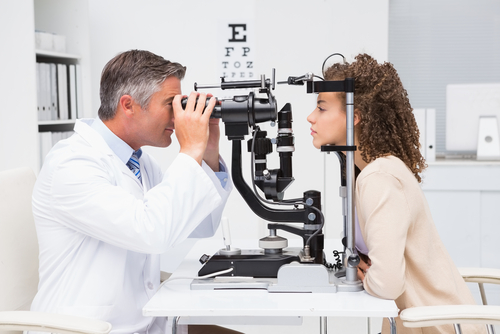
Eye exams are not only necessary for keeping your prescription up to date. They are also essential for detecting and treating various conditions, such as dry eye syndrome.
You can regularly experience discomfort and blurry vision when you have dry eyes. This can compromise your ability to enjoy day-to-day life.
The first step in finding relief for dry eyes is undergoing a comprehensive exam. Keep reading to find out what dry eye syndrome is and how an eye exam can provide comfort and clear vision.
What Is Dry Eye Syndrome?
Dry eye syndrome occurs when there is a lack of lubrication in the eye. A vital part of your ocular health, tears are responsible for keeping the eyes moistened and smooth. They also protect this vulnerable part of your body from infection and irritants like dust.
In some cases, the eye does not produce sufficient tears. In others, the quality of tears produced is not adequate.
Symptoms of dry eye syndrome include:
- An itching or burning sensation
- A sensation that something is in the eye, like sand
- Redness
- Eye pain
- Stringy mucous
- Watery eyes
- Blurry vision
There are many potential causes of dry eye syndrome. Decreased tear production can be a byproduct of the normal aging process.
Some diseases can increase your risk of developing dry eyes as well. These include conditions affecting the thyroid and autoimmune disorders like rheumatoid arthritis.
Medications such as antihistamines and nasal decongestants can also lead to dry eye as a side effect. Lastly, your environment, particularly one involving wind and dry air, can have the ability to dry out your eyes. So can lifestyle choices such as wearing contacts for too long and staring at a screen for an extended period without breaks.
A common condition, about 16 million people have dry eyes in the United States alone.
How Can an Exam Address Dry Eyes?
You cannot treat dry eyes or their symptoms until you receive a diagnosis. During an eye exam, your eye doctor will ask if you have any concerns about the health of your eyes. Your eye doctor can spot signs of dry eye syndrome that you may not be aware of.
At that point, they will consider your symptoms and perform a thorough evaluation to conclude if dry eye or another condition is involved.
They can test your tears specifically to measure how many you are producing and if they are high enough in quality. Such tests are very quick and completely painless.
They will give your eye doctor vital information to allow them to develop the best way to help you feel better.
Treatment for Dry Eyes
Once dry eye syndrome has been identified, there are many options available to ensure your eyes can feel comfortable again.
Many times, over-the-counter eye drops are the first recommendation. Also known as artificial tears, they help replace any moisture lacking in your eyes. Prescription medications are another option.
When medications are not enough to treat dry eye, a few procedures may help. These include the closure of the tear ducts to maintain the presence of tears in the eye and the implantation of permanent drainage plugs.
Thanks to this range of treatment methods, relief is in sight.
Schedule an Appointment
Schedule an appointment today to experience the GRO difference. Call 616.588.6598 or click here.





















